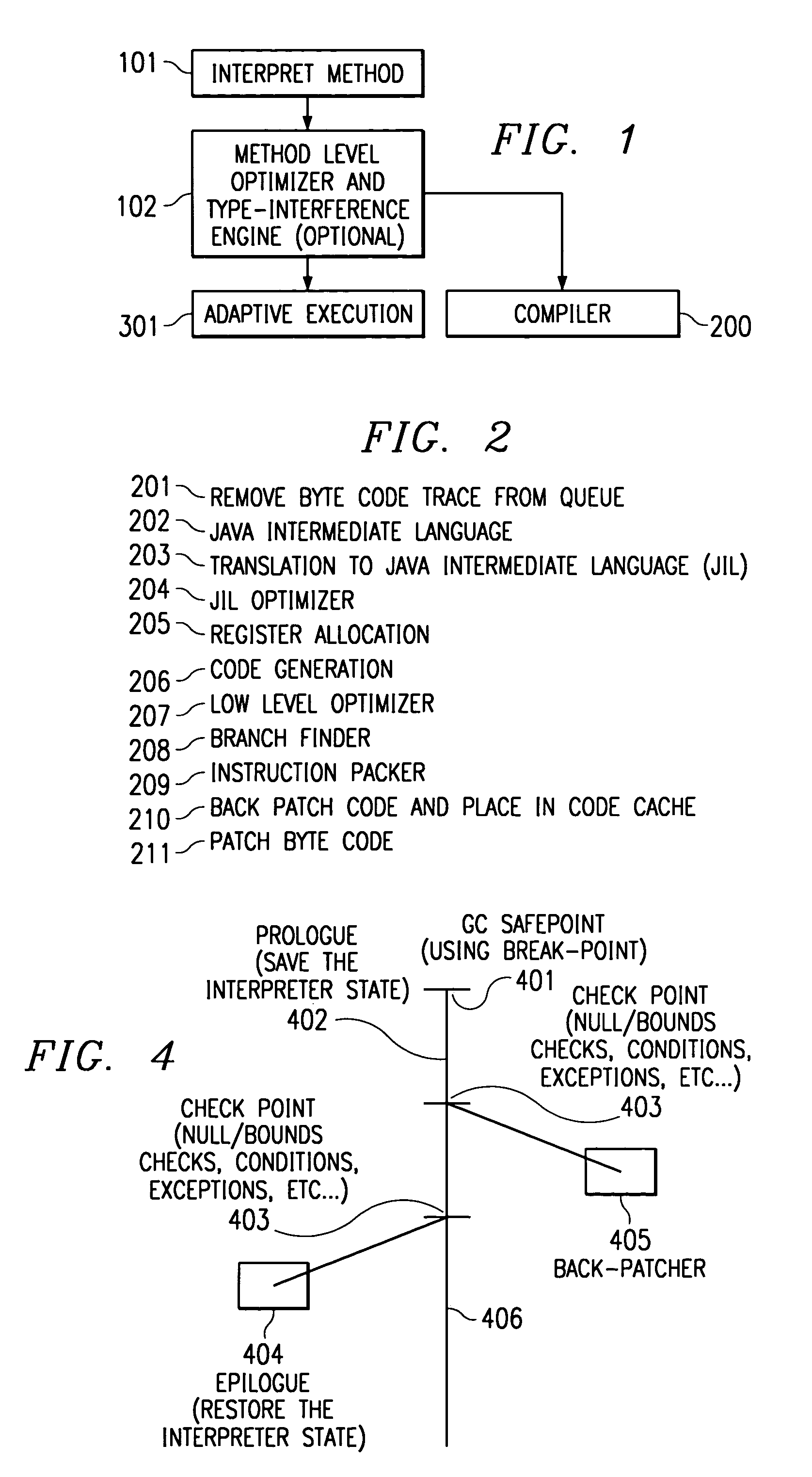Method and apparatus for trace based adaptive run time compiler
a run time compiler and run time technology, applied in computing, instruments, electric digital data processing, etc., can solve the problems of wasting time and time during compilation, and compiling too little code generally costs time during execution, so as to achieve high execution speed without unnecessary compilation
- Summary
- Abstract
- Description
- Claims
- Application Information
AI Technical Summary
Benefits of technology
Problems solved by technology
Method used
Image
Examples
Embodiment Construction
[0030]FIG. 1 depicts a high level block diagram representation of the run time compiler according to a preferred embodiment of the present invention. At step 101, the interpreter acquires a method to process. At step 102, the mechanism may optionally optimize the method as a whole in the compiler 200. It is noted that in the present invention there is no obligation to optimize or compile an entire method at a time. The compiler 200 is discussed in detail in FIG. 2. If the method as a whole is not optimized, the mechanism proceeds with adaptive execution 301, which is discussed in detail in FIG. 3.
[0031]FIG. 2 depicts a sequence of operations 200 of the compiler portion of the adaptive run time compiler mechanism according to a preferred embodiment of the present invention. In a preferred embodiment, during run time, the interpreter selects byte code traces for compilation based on a number of factors. These are discussed in greater detail in connection with FIG. 3. Upon selecting a ...
PUM
 Login to View More
Login to View More Abstract
Description
Claims
Application Information
 Login to View More
Login to View More - R&D
- Intellectual Property
- Life Sciences
- Materials
- Tech Scout
- Unparalleled Data Quality
- Higher Quality Content
- 60% Fewer Hallucinations
Browse by: Latest US Patents, China's latest patents, Technical Efficacy Thesaurus, Application Domain, Technology Topic, Popular Technical Reports.
© 2025 PatSnap. All rights reserved.Legal|Privacy policy|Modern Slavery Act Transparency Statement|Sitemap|About US| Contact US: help@patsnap.com



